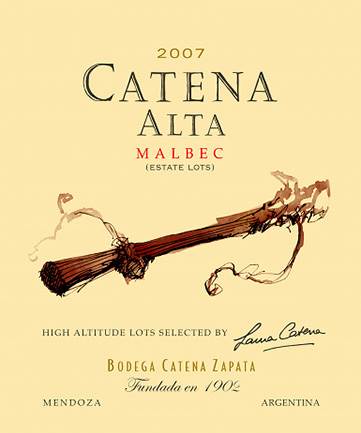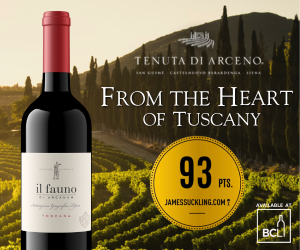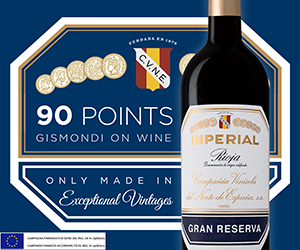Wine writers love to use the terms "best buy" and "best value" to make sure you pay attention to their review, but what does best value really mean when you open that bottle of wine?

If price is seldom a measure of quality, can it possibly be a measure of value? For this writer, value is all about exceeding expectations or, as the marketers like to say, over-delivering in the glass, and there is no better accolade one could give a wine then that.
It is my experience that value falls into three broad categories, at the high end for wines $75 and above, at the low end under $25, and perhaps the more significant mid-range of $25 to $75. Why is the mid-range so important? Well, if we agree there is a fixed cost in growing grapes and making wine, it is hard to imagine encountering too many best buys under $10. Mainly because most of that $10 is eaten up by production and shipping costs and, here in B.C., a massive alcohol tax.
Yet what if it only costs $10 or $15 per bottle to make the finest wine in the world - how can you justify calling a $95 wine good value? It's a question I wrestle with every day. In the end it comes down to what's in the glass, and having enough experience to draw upon when you consider what else the same money will buy in the marketplace.
One of the best value tips I can give you is to compare the best wines of a young or emerging region with those of an old venerable district. If you can't tell the difference between second growth Bordeaux and Canadian red wine, save yourself $40 to $100 and buy locally. Similarly, the best cabernet blends of Chile, or the finest malbecs of Argentina when compared to the best of California or France are usually, by comparison, excellent value.
Don't give up on Europe. There are many French, Spanish and Italian labels coming from non-traditional areas that are turning heads for a tenth of the price. Think of monastrell reds from Spain, or most current Rhone wines, not to mention the Languedoc and most of southern Italy.
Each year I taste somewhere between two to three thousand wines. Value is one thing, availability is quite another. Here are six of the best value labels I've tasted in 2011 that you can still buy. You can decide for yourself whether they are gift material or simply the perfect solution to your holiday entertaining. Whichever you decide, you can be sure each over delivers for the price.
The Santa Carolina Sauvignon Blanc Reserva 2011 from Valle de Leyda is a ridiculous value from Chile. It's packed full of fresh, mineral/ wet rock notes with light, sea water, grapefruit and watermelon flavours. The style is refreshing without any aggressive, bitter asparagus notes but rather light, smoky jalapeno and juicy guava flavours. Extreme value.
One of my favourites this year is the The Doctor's Riesling 2010 out of Marlborough, New Zealand. This is a low alcohol (8.5%) Kabinett style Riesling picked at an early stage of ripening much like a German Mosel. Expect a fresh, crisp, juicy, elegant palate with a zippy, creamy texture and more lime, floral, green apple skin, grassy, minty, mineral, sherbet mango flavours. Great balance and juicy acidity with lots of flavour. Riesling freaks should buy this one by the case. Perfect for spicy foods.
Louis Bernard Côtes du Rhône Villages Rouge 2009 comes with big weight and power for very little in price. Spicy blackberry fruit dominates with bits of licorice and some classic garrigue or dried herbs in the finish. It is warm but with impressive concentration of fruit. A good match with party food.
Not all Languedoc wine is inexpensive but the Les Clos de Paulilles Syrah - Mourvèdre 2007 over delivers at $35 with it spicy minerality and powerful savoury black fruit aromas. The slate soil seems to sharpen and clarify its bright black fruit, cinnamon, coffee, licorice underbelly and mineral vanilla finish. Sophisticated, long and yet it is still a baby.
A super buy for the cellar or gift is the Catena Alta Malbec 2007 from Mendoza, Argentina a blend of fruit from four, separate, high-altitude vineyards. What you notice right off is the dense brooding black colour and open aromatic black currant and pepper notes overlaying its licorice and sweet black fruit flavours. Power with finesse. Drink now with a rib-eye steak or cellar through 2018.
Taylor Fladgate 10 Year Old Tawny Porto is a remarkable blend of individual 630litre casks aged for an average of 10 years. The colour is pleasingly tawny; the nose infatuating. Look for bits of almonds, dark chocolate, toffee and spice with superb sweetness and length. The finish is long silky and polished with more toffee, orange and fig notes. Serve slightly chilled fireside with walnuts or try it with an almond cake.
Santa Carolina Sauvignon Blanc Reserva 2011, Valle de Leyda, Valle de San Antonio, Chile
Price: $12
UPC: 7804350596366
Score: 88/100
Remarks: Fresh, mineral aspects with light, sea water, grapefruit and watermelon flavours.
The Doctor's Riesling 2010, Marlborough, South Island, New Zealand
Price: $20
UPC: 009419056100137
Score: 90/100
Remarks: Perfect for spicy foods.
Louis Bernard Côtes du Rhône Villages 2009, Rhone Valley, France
Price: $16
UPC: 604174000271
Score: 89/100
Remarks: Spicy blackberry fruit dominates with bits of licorice and garrigue.
Les Clos de Paulilles 2007, Côte Vermeille, Roussillon, France
Price: $35
UPC: 003119460019969
Score: 92/100
Remarks: Bright black fruit, cinnamon, coffee, licorice and mineral finish.
Catena Alta Malbec 2007, Mendoza, Argentina
Price: $54
UPC: 89046444061
Score: 93/100
Remarks: Dense brooding aromatic spicy black currant and pepper notes.
Taylor Fladgate 10 Year Old Tawny Porto N/V, Douro Valley, Portugal
Price: $40
UPC: 05013626111284
Score: 92/100
Remarks: Long silky polished flavours flecked with toffee orange and fig notes.
Read more: http://www.vancouversun.com/life/Exceeding+grape+expectations/5841637/story.html#ixzz1gopVU9XN

 quicksearch
quicksearch





